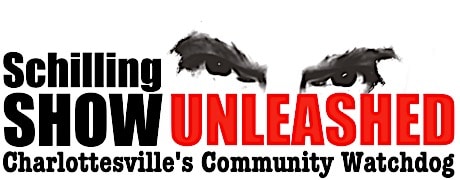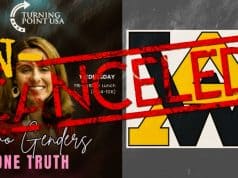by: Jud Crucis
 There is this presumptive narrative that has existed for quite some time that in the heart of Virginia, nestled amid the rolling foothills of the Blue Ridge Mountains, lies Charlottesville, a town with a quaint, postcard charm that belies the darker undercurrents of its society. Long before Charlottesville became a household name for its “Summer of Hate” in 2017, the University of Virginia, with its storied rotunda and verdant lawns, stood as a bastion of tradition and prestige. Yet, beneath the surface of academic “excellence” and genteel southern hospitality, there exists an invisible line that has long divided the town’s denizens. On one side, the affluent students, heirs to old money and new power, spending their parents’ money and capitalizing on family legacies, strolling about with an air of invincibility. Their designer clothes and polished manners masking a deep-seated elitism, and sense of entitlement that permeates every corner of their privileged existence.
There is this presumptive narrative that has existed for quite some time that in the heart of Virginia, nestled amid the rolling foothills of the Blue Ridge Mountains, lies Charlottesville, a town with a quaint, postcard charm that belies the darker undercurrents of its society. Long before Charlottesville became a household name for its “Summer of Hate” in 2017, the University of Virginia, with its storied rotunda and verdant lawns, stood as a bastion of tradition and prestige. Yet, beneath the surface of academic “excellence” and genteel southern hospitality, there exists an invisible line that has long divided the town’s denizens. On one side, the affluent students, heirs to old money and new power, spending their parents’ money and capitalizing on family legacies, strolling about with an air of invincibility. Their designer clothes and polished manners masking a deep-seated elitism, and sense of entitlement that permeates every corner of their privileged existence.
For the residents of Charlottesville, the university was and continues to be, both a blessing and a curse. While it can be said the Mr. Jefferson’s legacy brings economic vitality, it yet casts a long shadow over those who do not belong to its gilded inner circles. As the area’s single largest employer, it suppresses wages and like creeping kudzu, consumes ever more acreage and structures within the community. The locals, often descendants of those who built both the town and the university itself—with their hands, blood, sweat, and tears—find themselves too often marginalized, their voices and concerns regularly drowned out by the clinking of champagne glasses at fraternity soirees and the roar of luxury cars on quiet, cobbled streets.
Beneath the Greek letters adorning grand, columned houses, fraternity life thrives on a culture of excess and impunity. Tales of debauchery and misconduct rarely see the light of day, hushed by the insular fraternity bonds and the tacit approval of a leadership too charmed by open purses. It’s a place where favors are traded with a wink and a nod, and the consequences of malfeasance are quietly swept under the plush, antique rugs of alumni-funded halls, with the promise of a sizeable contribution to assuage any “youthful indiscretions.”
Many unreported incidents of hazing, sexual assault, and corruption fester, whispered about in dimly lit corners of bars and in hushed conversations of those who dare to speak out. Accountability is a stranger “on grounds” just as it is a stranger in the greater Charlottesville-Albemarle area. Accountability is an ideal that is as foreign in the community as a lush garden would be considered in the midst of a vast dessert. Despite the hue-and-cry to the contrary, Charlottesville in general, and U. Va in particular does not know racism. No! It only knows “greenism”. Anyone, of any color or creed may do just about anything they wish, so long as their wallets are fat and their checks are redeemable. Charlottesville is a place where wealth and influence bend the arc of both common sense and most certainly justice. The townspeople know this all too well, their grievances are too often met with polite indifference, their lives shaped by the capricious whims of those who see them as mere background players, window dressing hung simply in order to support their own, delusional and self-absorbed and narcissistic grand narratives.
At Mr. Jefferson’s University, the façade of genteel Southern charm cracks upon closer inspection, revealing a microcosm of the deep-seated social stratification that the graduates take with them out into the world. There are in reality two separate and unequal universities. One made up of privilege and power, the other, made up of resilience and quiet despair, entwined in a dance as old as the university itself.
There was a time when the University of Virginia stood for something—when it embodied the vision of Thomas Jefferson, who saw it as a temple of reason, virtue, and enlightenment. As a second generation native of the area, I have observed the decline for more than 50 years, I’ve watched in a state of utter perplexing dismay, as students poured in, full of promise, and exiting as cardboard cookie-cutter zombies. What was once a beacon of American academic excellence has become a moral and administrative wasteland—a shell of its former self, led by spineless administrators and populated by increasingly entitled students shielded from consequences.
Let us take a walk down memory lane, just within my lifetime—those things I easily recall that quickly get forgotten…by design.
- 1982: A U‑Haul rented by Sigma Chi carrying about 62 UVA fraternity pledges (rushes and members) on a “roll” to Randolph‑Macon Woman’s College overturned on Route 29 near Lynchburg after swerving, colliding with a Volkswagen. Two freshman pledges—Brian H. McKittrick (17) and Chris Meigs (18)—were killed, and many others seriously injured; the student driver faced reckless driving charges. Evidence of alcohol (beer cans) was noted at the scene. Following this tragedy and amid widespread destructive partying—particularly during “Easters” festivities, deemed by Playboy the “best party in America”—Dean of Students Robert Canevari recommended terminating the Easters tradition. The final discontinuation occurred that fall despite substantial student protest, including effigy-hanging of Canevari. This action was supposedly to mark a significant shift from laissez-faire oversight of Greek-life events toward administrative accountability, setting a precedent for later reforms in handling fraternity/sorority-related incidents. However, despite this Canevari would fail utterly two years later.
- 1984: Phi Kappa Psi fraternity was the site of a gang rape—survivor Liz Seccuro was drugged and raped at a pledge event, and Robert Canevari did NOTHING! William Beebe would later plead guilty to sexual battery in 2007.
- 1991–92: Multiple internal UVA reviews were triggered by student graffiti naming alleged rapists, prompting reforms in sexual harassment policy and the formalization of a Sexual Assault Education Coordinator.
- 1997: First reported cases of drug-facilitated sexual assault and efforts to combat date‑rape drugs were documented.
- 1998–2013: At least 205 sexual assaults were reported, yet evidence suggests no expulsions occurred for sexual misconduct during this period—by contrast, 183 students were expelled for honor-code violations.
- 2009: A Metallica concert at UVA’s arena became notable when Virginia Tech student Morgan Harrington went missing. Her remains were later found, and a UVA-connected suspect, Jesse L. Matthew Jr. was charged and convicted—receiving multiple life sentences.
- 2010: UVA lacrosse player Yeardley Love was bludgeoned to death by ex-boyfriend and teammate George Huguely V. He was convicted of second‑degree murder and sentenced to 23 years. Coach Dom Starsia and the entire team knew Hughley was a mean drunk—no actions taken prior to Love’s murder.
- 2014: Sophomore Hannah Graham disappeared downtown; five weeks later her body was found—suspect Jesse Matthew pleaded guilty and received life sentences. His arrest only made possible by a privately owned security camera on the downtown mall, as the Charlottesville City Council refused to allow then police Chief Tim Longo the ability to surveil the area. Rolling Stone published a now-retracted exposé alleging a 2012 gang rape at the Phi Kappa Psi house. Charlottesville police ultimately found no evidence, but the fallout led to fraternity suspensions, lawsuits, and internal reviews. While Rolling Stone retracted the story, Courtney Stuart of “The Hook” had numerous articles regarding rape on grounds that substantiated the existence of an issue.
- 2015: UVA hires full-time Title IX staff, updates Clery and SaVE Act compliance, and introduces trauma counseling services. Ongoing cases surfaced, such as a 2011 “Jane Doe” alleging drug-facilitated sexual assault at a debate club—claimed yet another Canevari/Seccuro mishandling by university authorities. Surveys (2015 & 2019) indicated over 25% of female undergraduates reported sexual assault via physical force or incapacitation; institutional responsiveness was still questioned.
- 2022: Yet another incident of violence as former UVA football player Christopher Darnell Jones Jr. carried out a mass shooting at UVA killing three teammates and wounding two others. The Ryan administration clouded the issues and has yet to release the full story regarding the unaddressed handling of the hazing of Jones by his teammates. He pleaded guilty in 2024 to multiple counts of second‑degree murder.
- 2024: A Kappa Sigma pledging incident reportedly left a student comatose after a fall down stairs during heavy drinking. The fraternity was suspended. Reports of hazing by Theta Chi and Pi Kappa Alpha included illicit drug use and physical rituals, prompting suspension and removal from Grounds. Reddit users noted cocaine busts tied to one fraternity.
UVA’s history of misconduct includes a progression: early hazing and sexual violence went largely unchecked, evolving to more severe tragedies like murder and mass shootings. While administrative reforms have begun addressing Title IX, alcohol, and mental health, recurring incidents show a persistent challenge in fully curbing dangerous behaviors among students and affiliates.
It didn’t happen all at once. The rot was slow at first; it was a symptom. The situation has become unmanageable. A two-tiered justice system emerged—one for regular students and “townies,” and another for the golden boys of the athletic department. I personally witnessed the aftermath of athletes caught shoplifting from Fashion Square Mall, who walked away with slaps on the wrist and smug grins. The same happened to players’ carjacking high-end stereo equipment from locals’ vehicles. And if you were a clerk at a gas station, waited tables on the Corner, or served students at the local Kroger, you could expect to be talked down to, dismissed, or outright dehumanized by young men who thought they were gods because they could run a football or dunk a basketball.
The most revolting open secret, however, was the predatory nature of UVA’s fraternity scene. Before the drinking age rose from 18 to 21, it was routine—routine—for high school girls from the Charlottesville/Albemarle County community, to be lured to frat parties, only to be plied with alcohol and subjected to violations too disturbing to print. I have lived here long enough, I know directly and have heard the stories. Maybe you even knew some of the girls, as I did. Many of us did. And we watched in silence as case after case disappeared into administrative black holes, with victim’s gas lit or shamed, and perpetrators shielded by prestige, money, and connections.
Alas after decades of decay, here we are. Now, there’s the now former university president, Jim Ryan, a man whose tenure can only be described as cowardly and complicit. His obsession with “wokeness,” empty virtue signaling, and DEI bureaucracy did absolutely nothing to confront the real problems on his campus: anti-Semitism, corruption, violence, and moral rot. The man presided over scandals that would have demanded resignations at any institution with an ounce of honor. Instead, he dodged accountability and let the university fester.
However, let me be clear, Jim Ryan is not the disease—he’s the symptom. He’s the inevitable product of a university that long ago traded character for branding, and scholarship for athletic marketing. He built a machine, not a campus. A place where the name matters more than the mind.
I’ve spent my life watching this university—from the Lawn to the libraries, from Scott Stadium to the downtown bars. I’ve watched it betray its founding values. And I’ve watched as Charlottesville, the town that raised it, became a punching bag for its reckless children.
To those still paying attention: this is what decline looks like. It isn’t sudden. It’s slow. It’s smug. It’s cloaked in a UVA hoodie and a legacy name. And it’s long past time we called it what it is. Thomas Jefferson would not recognize his university. However, many of us in Charlottesville still do—and we mourn what it has become.
The long-heralded scholastic “flagship” of the Commonwealth is drifting in dangerous waters. Once envisioned by Thomas Jefferson as an “academical village” of truth-seekers, civic stewards, and moral thinkers, UVA today resembles a flagship without a compass—rudderless in mission, compromised in leadership, and lost in scandal.
From the controversies back in the early 80’s to the resignation of Teresa Sullivan, to the tragic and still-unresolved murder of three football players under Jim Ryan’s administration, to hazing scandals and a medical center shrouded in opaque bureaucracy, UVA has repeatedly failed the most basic test of institutional integrity: telling the truth.
If UVA is to return to being what Jefferson imagined—a beacon of Enlightenment principles and American virtue—it must embark on a bold, humble, and thorough self-reckoning.
Too many decisions have been made in the dark. The administration’s handling of student rapes, assaults, and deaths, the culture of silence surrounding the athletics department, and the deeply embedded corruption in the medical center demand more than internal reviews. The university must establish an independent, external commission to investigate and publish full findings. No more protective PR. The truth must come first—even if it’s ugly.
UVA needs leadership with conviction, not careerism! Our last two presidents have presided over escalating chaos while projecting calm. The next president must be a truth-teller, a reformer, and a guardian—not another risk-averse manager trying to appease donors and media cycles. The University doesn’t need a brand ambassador. It needs a statesman—one who can restore the marketplace of ideas, not the monoculture of conformity. Jefferson believed in the power of open dialogue, dissent, and rigorous debate. However, today’s campus too often rewards ideological orthodoxy while punishing genuine diversity of thought. UVA must recommit to academic freedom and pluralism— hiring faculty based on intellectual merit, not political allegiance. If this university can’t tolerate differing viewpoints, it has no business calling itself a liberal arts institution.
Mr. Jeffersons’s University needs to remember the notion of “In Loco Parentis” and put student lives before athletic prestige. The deaths of student-athletes should have triggered a seismic overhaul. Instead, they’ve been met with silence and spin. UVA must immediately audit its athletic programs, re-evaluate recruitment and mentoring systems, and place all coaching and leadership decisions under ethical review. If we protect a winning record over student safety, we’ve already lost.
Mr. Jefferson’s University needs to rebuild trust with the Charlottesville and Albemarle community—starting with truth! For too long, UVA has operated like a self-contained corporate campus. The local community has watched historic neighborhoods gentrified, minority voices marginalized, and promises broken. The university must go beyond land acknowledgments and platitudes. It must engage in just, mutual partnerships that give the people of Charlottesville a real seat at the table.
Mr. Jefferson’s University needs to revive the spirit of the Academical Village. Jefferson built UVA to be a living community of scholars—where ideas were shared across gardens and courtyards, not buried under layers of bureaucracy. They must cut administrative bloat and reinvest in faculty mentorship, cross-disciplinary learning, and student belonging rooted in intellectual growth, not institutional politics.
Lastly, Mr. Jefferson’s University must choose legacy over optics. The University of Virginia must decide what it wants to be: just another brand-name institution caught in the gears of cultural confusion or a place where truth, honor, and liberty still matter. If it continues on the current path, it will lose not just its way, but its soul. But if it’s willing to confess, confront, and reform, it might just become, once again, the university Jefferson dreamed it to be. It’s time to right the ship.








I have followed many of these atrocities over the years but to read about them in one succinct editorial paints an even more horrific and disturbing series of events. Thank you Jud Crucis. I applaud you for speaking out and hope the pervasive and sickening culture at UVA will change and result in some consolation to the many noted victims/families. On deck Gary Taylor story which no one at UVA athletics will address. Up against the powers that be but always worth the fight.
[…] on July 6, The Schilling Show page ran an amazingly comprehensive review of the many ways Mr. Jefferson’s university has declined over author, Jud […]